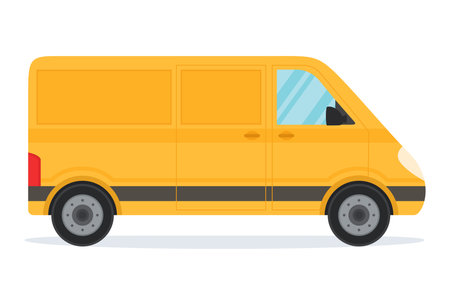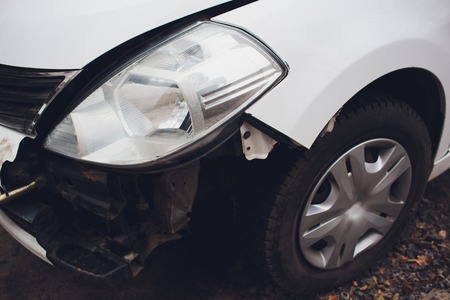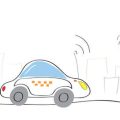Understanding Uninsured Motorist Incidents
Getting hit by an uninsured driver is a scenario that, unfortunately, occurs more often than many people realize in the United States. In simple terms, an uninsured motorist is someone who operates a vehicle without the legally required auto insurance coverage. When you’re involved in an accident with such a driver, it can lead to unique legal and financial complications that go beyond a typical collision. This issue is especially relevant in the U.S., where millions of drivers still take to the roads without adequate insurance despite state laws mandating coverage. The high rate of uninsured motorists in some states increases the likelihood that responsible drivers may find themselves facing this stressful and potentially costly situation. Understanding what happens after being struck by an uninsured driver is crucial for anyone hoping to protect themselves, their passengers, and their finances.
Immediate Steps to Take After the Accident
If you find yourself hit by an uninsured driver, your actions at the scene are critical for both your safety and any potential insurance claims. Staying calm and following a systematic approach ensures you gather all necessary evidence and comply with U.S. legal requirements.
Call Law Enforcement
No matter how minor the accident may seem, always contact local law enforcement. A police report is often required by your insurance company, especially when the other party is uninsured. The responding officer will document the scene, gather statements, and file an official report, which becomes crucial evidence later.
Document Damages and Injuries
Use your smartphone to take clear photos of all vehicles involved, any visible injuries, street signs, skid marks, and property damage. If you or anyone else needs medical attention, mention this when calling 911 so first responders can assist immediately. Accurate documentation helps establish the facts in case of disputes with insurance providers.
Gather Essential Information
Even if the other driver is uninsured, collect as much information as possible. Here’s a quick reference table for what to obtain:
| Information Type | Details to Collect |
|---|---|
| Driver’s Details | Name, address, phone number |
| Vehicle Information | Make, model, year, color, license plate number |
| Insurance (if any) | Company name and policy number (if available) |
| Witnesses | Names and contact information of any bystanders |
| Police Report Number | Request the incident or case number from officers on scene |
Avoid Admitting Fault or Making Agreements
Avoid discussing fault or making side agreements with the uninsured driver at the scene. Statements made in haste could be used against you later. Instead, focus on gathering facts and let law enforcement handle legal determinations.
Notify Your Insurance Company Promptly
Once you leave the scene safely, notify your insurer as soon as possible. Provide them with all collected information and documentation. Prompt reporting helps speed up claims processing—especially important when dealing with uninsured motorists.

3. Legal and Insurance Implications
When you are involved in an accident with an uninsured driver, the legal and insurance ramifications can be complex and often unfavorable for the insured party. From a legal perspective, every state requires drivers to carry a minimum amount of auto liability insurance, but not everyone complies. If you’re hit by an uninsured motorist, they are still legally responsible for any damages or injuries caused by their negligence. However, collecting compensation directly from the at-fault party can be challenging, especially if they lack sufficient assets.
On the insurance side, your ability to recover costs depends heavily on your own policy. If you have Uninsured Motorist (UM) coverage—which is optional in some states but mandatory in others—your insurer will step in to cover your medical expenses, lost wages, and sometimes property damage, up to your policy limits. Without UM coverage, you may need to rely on collision coverage for vehicle repairs, which typically requires paying a deductible out of pocket.
Your legal rights include the option to sue the at-fault driver; however, success is often limited by the other party’s financial situation. In practice, most uninsured drivers are unable to pay significant damages even if a court rules in your favor. It’s also important to note that filing a claim under your own insurance policy may affect your premiums, depending on state laws and your insurer’s policies.
Responsibility for damages ultimately falls either on the uninsured driver (from a legal standpoint) or on your own insurance company (if you have appropriate coverage). This scenario highlights why carrying adequate UM coverage is crucial for financial protection against unpredictable risks posed by uninsured motorists.
4. How Uninsured Motorist Coverage Works
Uninsured Motorist (UM) coverage is a key component of American auto insurance, specifically designed to protect you if youre hit by a driver who doesnt have insurance or in cases of hit-and-run accidents. In the U.S., auto insurance policies often include both UM and Underinsured Motorist (UIM) coverage. While both types offer protection, they serve slightly different purposes: UM steps in when the at-fault driver has no insurance at all, while UIM applies when the other drivers policy limits aren’t high enough to cover your damages.
Understanding Deductibles and Coverage Limits
Deductibles and coverage limits are crucial factors that determine how much financial protection you receive from your insurer. Here’s a breakdown:
| Feature | Description |
|---|---|
| Deductible | The amount you must pay out-of-pocket before your UM/UIM coverage kicks in. Deductibles vary by insurer and state, but many policies offer low or even zero deductibles for UM claims. |
| Coverage Limit | The maximum amount your insurer will pay under your UM/UIM policy. These limits are typically chosen when you buy your policy and are often similar to your liability coverage limits. Some states require minimum levels, but higher limits offer greater protection. |
How Claims Are Paid Out
If you’re injured or your car is damaged by an uninsured driver, you would file a claim with your own insurance company under your UM or UIM coverage. Your insurer then pays for damages up to your selected limit after any deductible is met. Covered expenses may include medical bills, lost wages, pain and suffering, and property damage—depending on your policy and state regulations.
Key Points to Remember:
- UM/UIM coverage is not mandatory in every state, but it’s highly recommended due to the high number of uninsured drivers on American roads.
- Your coverage limits should reflect the potential cost of serious accidents; underinsuring yourself can leave you with significant out-of-pocket expenses.
- You cannot recover more than your actual damages; the goal of UM/UIM is to restore you to where you were before the accident—not to provide a windfall.
Summary Table: How UM/UIM Works
| Scenario | Your Policy Responds? | Payout Subject To Deductible? | Payout Capped At Limit? |
|---|---|---|---|
| Hit by uninsured driver | Yes (UM) | Yes/No (depends on policy) | Yes |
| Hit by underinsured driver | Yes (UIM) | Yes/No (depends on policy) | Yes |
| Hit-and-run accident | Often Yes (UM) | Yes/No (depends on policy) | Yes |
5. Potential Out-of-Pocket Costs
When you’re hit by an uninsured driver and don’t have sufficient insurance coverage yourself, the financial repercussions can be significant. Without uninsured motorist coverage or adequate personal protection, you may be responsible for covering all costs related to the accident out of your own pocket. These expenses can include vehicle repairs, medical bills, lost wages due to time off work, and even legal fees if you decide to pursue compensation from the at-fault party in court. It’s important to note that recovering damages directly from an uninsured driver is often difficult—many lack the financial resources to pay for your losses, even if a court judgment is made against them. This situation could leave you with substantial debt or force you to use savings or credit to manage immediate costs. Ultimately, being underinsured in such scenarios exposes you to a considerable financial burden, making it crucial to assess your current policy and consider adding uninsured/underinsured motorist protection for future peace of mind.
6. Pursuing Compensation: Next Steps
After confirming that the at-fault driver lacks insurance, you’ll need to consider your options for financial recovery. This can be a complicated and stressful process, but understanding the available routes can help you make informed decisions and protect your interests.
Filing a Claim with Your Own Insurance
If you have uninsured motorist (UM) coverage as part of your auto insurance policy, this is typically your first line of defense. UM coverage is designed to step in when you’re hit by a driver without insurance, covering medical expenses, lost wages, and sometimes property damage. To initiate a claim, contact your insurer promptly, provide all accident documentation, and cooperate fully with their investigation. Remember, there may be limits to what your policy will pay out, so it’s important to review your coverage details and ask questions about any exclusions or deductibles.
Pursuing Legal Action Against the At-Fault Driver
If you do not have sufficient UM coverage or if your damages exceed what your policy covers, you may consider suing the uninsured driver personally. This involves filing a lawsuit in civil court to seek compensation for your losses. However, it’s important to weigh the practicality of this option—many uninsured drivers lack significant assets, making collection difficult even if you win a judgment. Consulting with a personal injury attorney can help you evaluate whether legal action makes sense in your situation.
Other Potential Avenues for Recovery
Depending on your state’s laws and the specifics of the accident, there may be additional options for recovery. For example, some states have victim compensation funds or allow you to tap into other parts of your own insurance policy, like collision or medical payments coverage. It’s wise to discuss all possible avenues with your insurer or legal advisor to maximize your chances of financial recovery.
Documentation and Deadlines Matter
No matter which path you choose, meticulous documentation is critical. Save police reports, medical records, repair estimates, and correspondence with insurers or attorneys. Also be aware of deadlines for filing claims or lawsuits—missing these can jeopardize your ability to recover damages. Acting quickly and staying organized will help ensure you don’t miss any important steps in securing the compensation you deserve.
Preventative Measures and Best Practices
Being involved in an accident with an uninsured driver can be financially and emotionally stressful. However, taking proactive steps now can help you minimize the impact of such incidents in the future. Here are some practical tips on how to review your current insurance policy, increase your protection, and reduce your risk.
Review Your Insurance Coverage Regularly
Start by carefully reviewing your auto insurance policy at least once a year. Pay close attention to your Uninsured Motorist (UM) and Underinsured Motorist (UIM) coverage limits. These components are crucial for protecting yourself when the at-fault driver lacks sufficient insurance. If you’re unsure about the details or adequacy of your coverage, reach out to your insurance agent for clarification.
Consider Increasing Your Coverage Limits
Minimum state requirements for UM/UIM coverage may not provide enough protection if a serious accident occurs. Evaluate your financial situation and consider raising your coverage limits. Higher limits can offer better peace of mind and help cover medical expenses, lost wages, or property damage that exceed basic policy thresholds.
Add-On Options for Enhanced Protection
Explore additional options like Medical Payments Coverage (MedPay), Personal Injury Protection (PIP), or Collision Coverage. While these may increase your premiums slightly, they serve as valuable safety nets if you encounter an uninsured driver on the road.
Minimize Risk with Safe Driving Practices
While you can’t control the actions of other drivers, you can reduce your risk by following safe driving habits. Avoid distractions behind the wheel, always obey traffic laws, and maintain a safe distance from other vehicles. Defensive driving courses can also sharpen your skills and sometimes lead to discounts on insurance premiums.
Stay Informed About State Laws
Laws regarding uninsured motorists vary by state. Stay updated on local regulations so you know exactly what protections you have and what’s required in your area. This knowledge helps ensure you’re fully compliant and adequately covered.
Establish a Relationship with Your Insurance Agent
Finally, build an open line of communication with your insurance provider or agent. They can offer personalized recommendations based on your driving history, location, and needs—making sure you have comprehensive protection tailored for scenarios involving uninsured drivers.

